


Fiesta de las estrellas Las Majadas 2012.
Fin de semana de observación astronómica y naturaleza. Un evento abierto a todos, con actividades para toda la familia. No se requiere experiecia previa.
_________________________
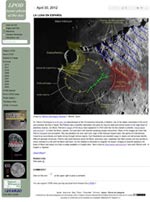
En el LPOD del 30 abril 2012, "La Luna en Español" Charles Wood comenta esta web.
_________________________
En BloGeo, el Blog de la Facultad de Ciencias Geológicas de la UCM, también comentan esta web: "Observar el cielo" con Patricio Domínguez
Y en el Blog Ciência e Tecnologia (Brasil): A Lua Em Espanhol

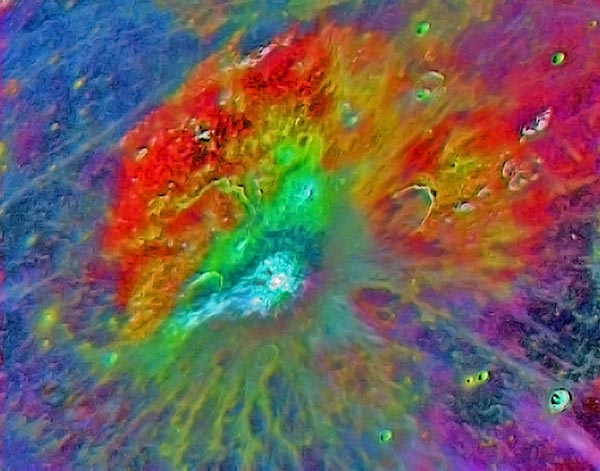
The Aristarchus region is one of the most interesting areas on the Moon. It is one of the very few places where the moon is not grey at the naked eye as it appears with a distinctive olive green colour. Moreover, the high albedo ofAristarchus crater makes it one of the brightest spots in the moon.
Sometimes the differences in brightness values from pictures are caused by variations in topographic slopes and hence changes in sunlight illumination angle. However, some of the differences are because of variations in mineralogical composition. Ratio transformations of a set of pictures taken in different spectral bands can be applied to reduce the effects of such environmental conditions isolating the colour differences related to composition of rocks. Therefore, ratio images can be meaningfully interpreted as a surface mineralogy composition chart.
In this composite picture I have used blue, red and near infrared bands as primary pictures. Then I calculate the ratio pictures using ImageJ, a free image analysis software. Hence, three ratio pictures are created and combined in a RGB picture in which the ratio R/B controls the red-channel brightness, its reverse (B/R) the blue channel and the ratio IR/R the green. For reference, later, I have used an NIR image to show some of the topography details.
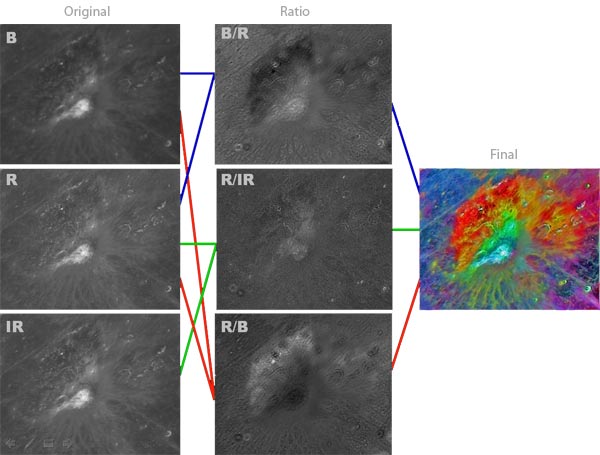
In the picture, red and orange colours are mainly pyroclastic blankets. Mature mare materials are blue (younger) or magenta (older), however fresh basalts are clear yellow as it is visible in the small craters that excavate the altered surface materials. Highland materials appear in cyan and light blue (i.e. cobra head, Western of Aristarchus and some other small near craters. Montes Agricola and the Agricola Straits are covered by younger pyroclasts than the surrounding mare units at the North-West.
The Aristarchus impact crater was produced near the limit between highland and mare material and because this difference in composition the ejecta blanket shows an asymmetry in colour (greenish grey derived from mare basalts towards the South and orange derived from highlands towards the N and NE).
Pictures taken at home in Madrid, Spain. August 19 2011, 01:33UT
Telescope Celestron C11 CGE. Camera DMK 21AU618.AS, Filters Astronomik R and G type II and IR Planet Pro 742. Ratio images calculated with ImageJ <http://rsbweb.nih.gov/ij/>
Patricio Domínguez
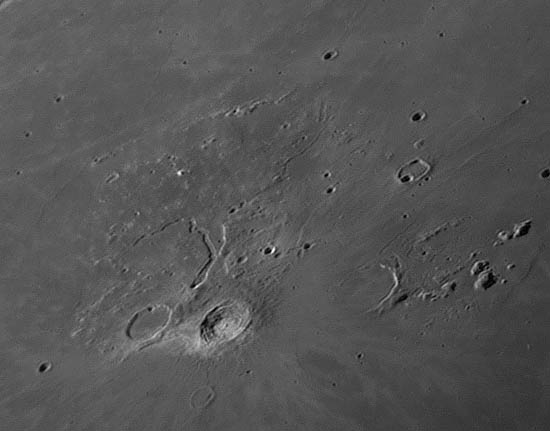
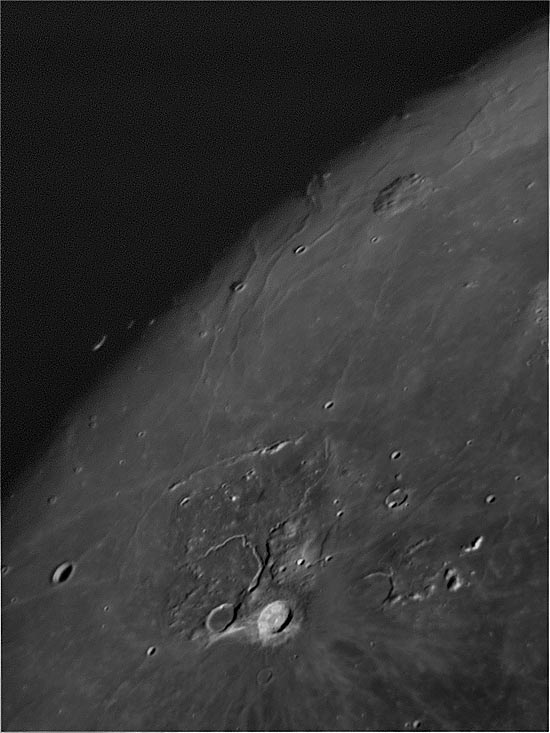


El cráter Lichtenberg y el vulcanismo lunar más reciente
 Proceso de formación de un cráter de impacto
Proceso de formación de un cráter de impacto

El sistema de diques de Parry-Fra Mauro

La Formación Terrazas de los Apenninus (Apennines Bench Fm.)
 Estructuras volcánicas no asociadas a maria
Estructuras volcánicas no asociadas a maria

Langrenus: fundidos de impacto y un pico central peculiar

Calderas volcánicas en Rima Hyginus

El complejo volcánico de las colinas de Marius

Campo de volcanes de Hortensius - Milichius

Los cráteres de halo oscuro de Schickard: criptomares

Los cráteres de halo oscuro de Alphonsus: vulcanismo
